Cappadocia Culture Guide
What are the best things to do in Cappadocia apart from sightseeing, museums and architecture?
Dive deeper into Cappadocia’s capital and check our tips for dining, shopping, nightlife and activities!

Cappadocia is famous for its extraordinary rock formations, often referred to as "fairy chimneys." These unique geological wonders are the result of volcanic eruptions that occurred millions of years ago.
Over time, wind and water erosion sculpted these soft volcanic rocks into their whimsical shapes, creating a surreal landscape that seems straight out of a fantasy world.
This feature made Cappadocia is a gem in the heart of Turkey. In this Cappadocia Culture Guide, we'll delve deep into the region's unique architecture, art, cuisine, and lifestyle, uncovering the secrets that make Cappadocia a must-visit destination.
The "Cappadocia Culture Guide: Unveiling the Heart of Turkey" is an essential resource for immersing oneself in the region's rich history and traditions.
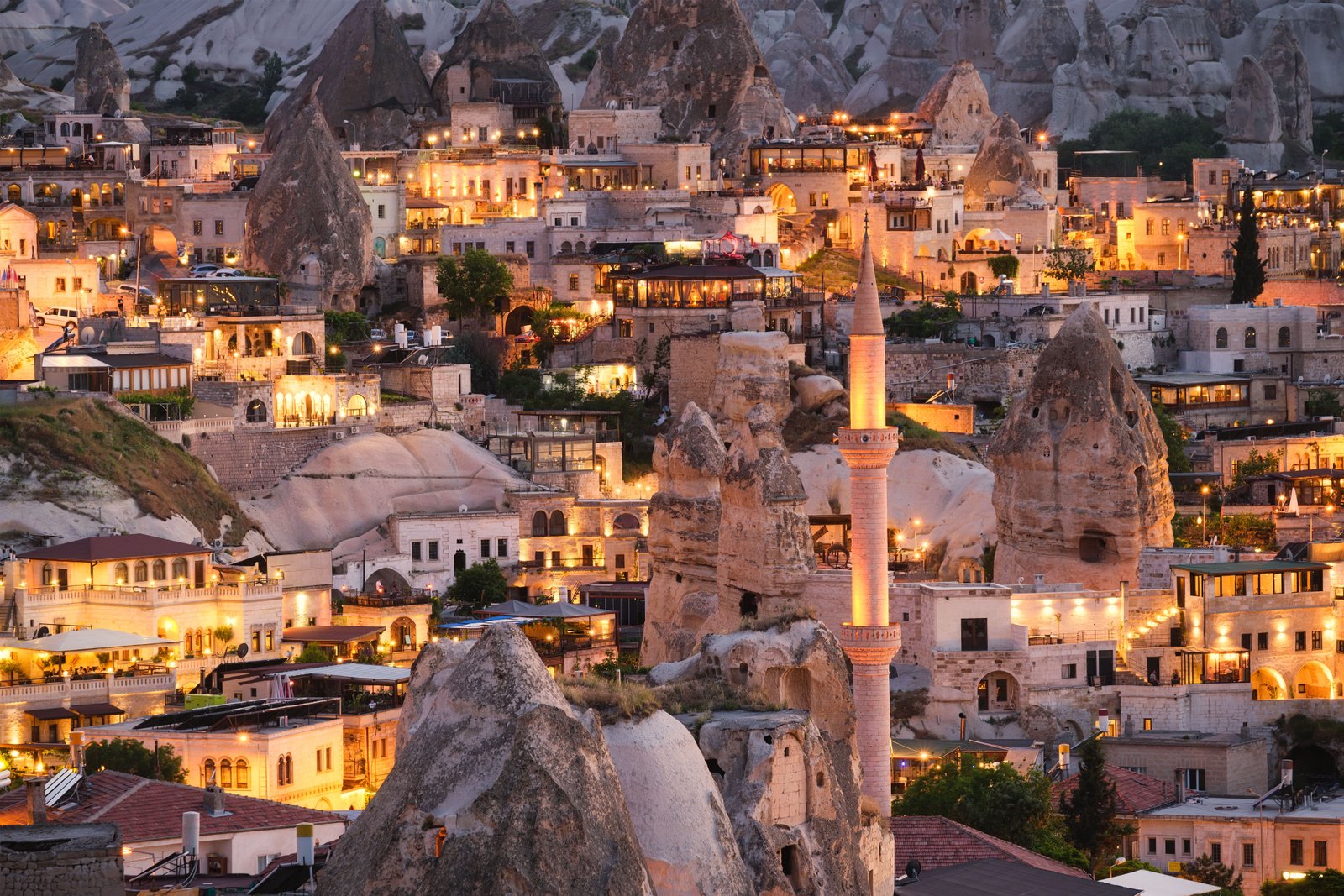
Cappadocia Culture Tips
- Geographical Structure: Understand the geological formation of Cappadocia, which has influenced its history and culture.
- Local Habits and Lifestyle: Gain insights into the daily lives and traditions of the people who call Cappadocia home.
- Handicrafts: Learn about traditional Cappadocian crafts such as pottery, carpet weaving, and onyx carving.
- Local Artists and Workshops: Explore the thriving art scene in Cappadocia, including visits to artists' studios and workshops.
- Culinary Delights: Delight your taste buds with Cappadocia's unique dishes, from pottery kebabs to pumpkin dessert.
- Breakfast Traditions: Experience the joy of a traditional Cappadocian breakfast, featuring fresh ingredients and flavours.
- Souvenirs: Discover what souvenirs are worth purchasing in Cappadocia, from ceramics to textiles.
- Local Markets: Explore bustling markets and bazaars to find authentic Cappadocian goods.
Cappadocian Art
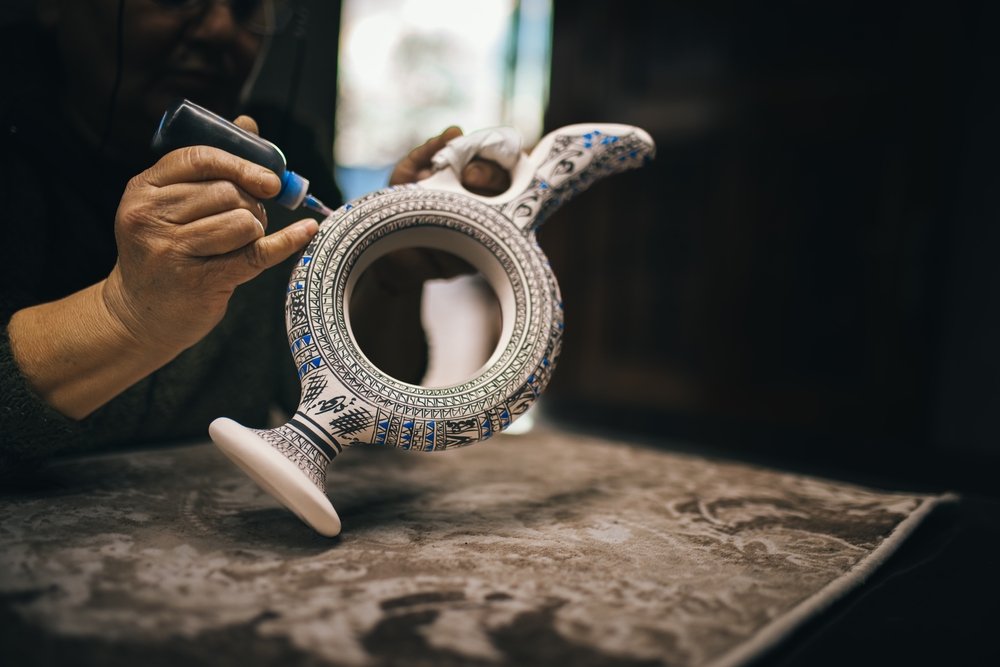
Handicrafts and non-industrial art
Cappadocia has a vibrant art scene, with a particular emphasis on handicrafts and non-industrial art. Local artists and craftsmen create unique pieces inspired by the region's natural beauty and cultural heritage. You can explore art galleries, studios, and workshops where these talented individuals showcase their creations.
Artists and workshops
To get a closer look at the artistic spirit of Cappadocia, consider visiting local workshops and meeting the artists in person. Whether it's pottery, painting, or sculpture, you'll find a diverse range of artistic expressions that draw inspiration from the stunning surroundings.
- Pottery: Potters have been making pottery in Cappadocia for hundreds of years. The red clay in the area is great for making pottery, and there are still potters in Cappadocia who use old techniques to make traditional pottery.
- Carpet weaving: weaving carpets is another extremely well-known traditional craft in Cappadocia. The area is famous for the magnificent wool and silk rugs that are made there. Hand weaving on looms produces carpets, and Cappadocian folk art frequently serves as inspiration for the patterns.
- Jewellery making: Traditional jewellery manufacturing is a common craft in Cappadocia. Silver, gold, and valuable stones are used to make the beautiful jewellery that comes from this area. Folk designs from Cappadocia are often used to make jewellery, like evil eye charms and pomegranate earrings.
- Carving wood: Shaping wood is a renowned traditional craft that originates in the region of Cappadocia. Exquisite wood crafts made from walnut, oak, and olive wood can be found in this area. People from Cappadocia often carve animals, birds, and flowers into wood in traditional styles.
- Making weaving: Making baskets by hand is also a famous traditional craft in Cappadocia. The beautiful baskets made from willow, reed, and grass that come from this area are well known. Designs from Cappadocia, like geometric shapes and animal patterns, are often used to make baskets.
Cappadocian Cuisine
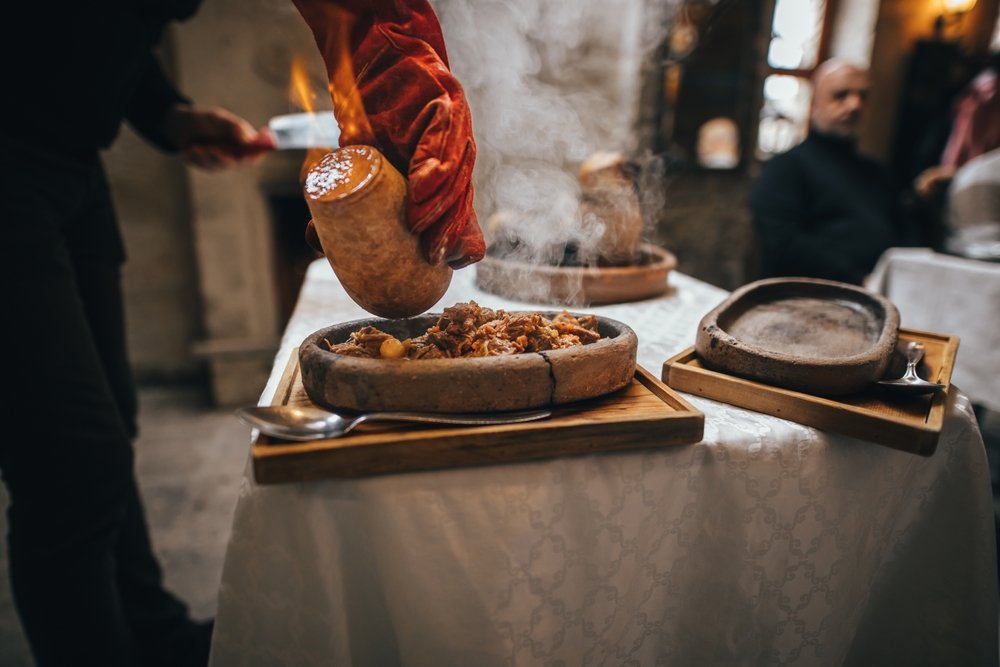
No culture guide is complete without a culinary journey, and Cappadocia offers a feast of flavours to tantalize your taste buds. From traditional Turkish dishes to regional specialties, Cappadocian cuisine is a delightful blend of flavours and textures.
You can start your day the Cappadocian way with a hearty breakfast. Traditional breakfast spreads often include olives, cheeses, honey, fresh bread, and an assortment of jams and preserves. Don't miss the opportunity to savor the famous "menemen," a flavorful dish made with eggs, tomatoes, and peppers.
Dining in Cappadocia is a communal experience. Many restaurants offer "sini," a shared meal served on a large tray. It's a chance to taste a variety of dishes, from kebabs to stuffed vine leaves. The warm and welcoming atmosphere of Cappadocian restaurants makes dining here a memorable experience.
- Testi Kebabı: A slow-cooked lamb or beef stew that is cooked in a sealed clay pot.
- Gözleme: A thin flatbread that is filled with a variety of savory or sweet ingredients, such as cheese, meat, vegetables, or fruit.
- Mantı: Small dumplings filled with seasoned ground beef or lamb, and served with yogurt and garlic sauce.
- Dolma: Stuffed vegetables, such as grape leaves, peppers, or eggplants, that are filled with a mixture of rice, herbs, and spices.
- Köfte: Meatballs that are made with a variety of spices and herbs, and often served with rice or bulgur wheat.
- Pide: A flatbread that is topped with a variety of savory ingredients, such as cheese, meat, vegetables, or eggs.
- Lahmacun: A thin flatbread that is topped with a mixture of minced meat, vegetables, and spices, and then baked in a wood-fired oven.
- Çiğ börek: A pastry that is filled with a mixture of raw bulgur wheat, herbs, spices, and vegetables, and then deep-fried.
- Wine Tasting: Explore Cappadocia's burgeoning wine culture with tastings at local vineyards.
Cappadocian Architecture & Natural Rock Formations
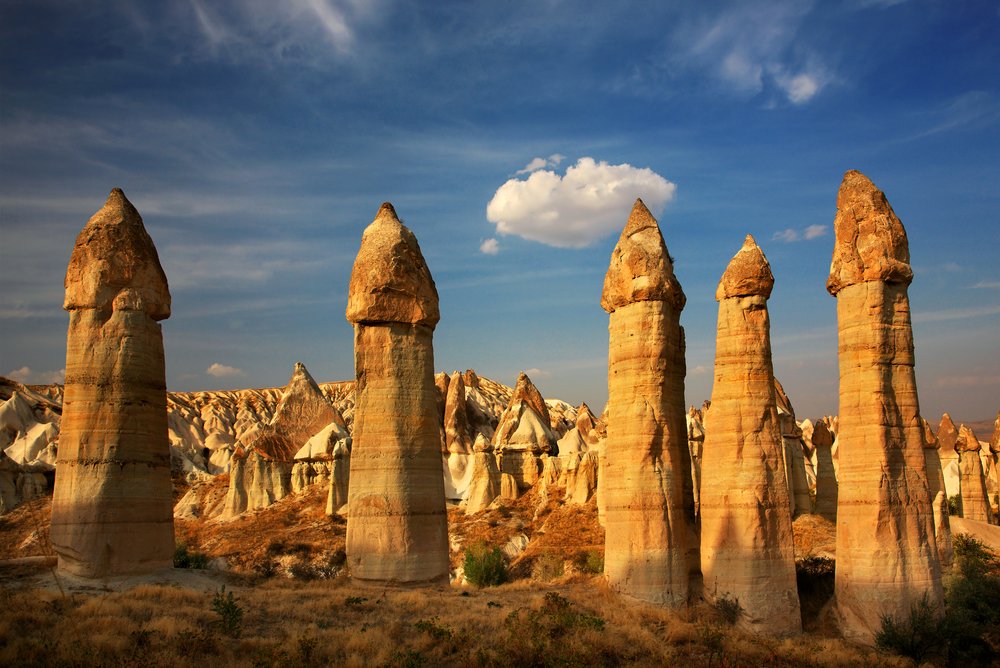
Cappadocia, with its otherworldly landscapes and rich cultural heritage, is a gem in the heart of Turkey. In this Cappadocia Culture Guide, we'll delve deep into the region's unique architecture, art, cuisine, and lifestyle, uncovering the secrets that make Cappadocia a must-visit destination.
One of the most remarkable features of Cappadocia's architecture is its cave dwellings. For centuries, people have carved out homes, churches, and even entire underground cities into the soft rock of the region. These cave dwellings provided natural insulation, keeping residents warm in the winter and cool in the summer. Exploring these ancient caves offers a fascinating glimpse into the ingenuity of Cappadocia's inhabitants.
To truly appreciate Cappadocia's culture, it's essential to understand the region's geographical structure. Cappadocia is characterized by its otherworldly topography, featuring cone-shaped rock formations, deep valleys, and expansive plateaus. The unique landscape has played a significant role in shaping the culture, offering both challenges and opportunities to its residents.
- Fairy Chimneys: The most famous feature of Cappadocia's scenery is the fairy chimneys, which are long, pointed rocks also called hoodoos. They are tall, thin towers made of tuff, a soft volcanic rock that has a harder cap rock on top that keeps them from washing away. Over millions of years, wind and water have shaped these formations into strange forms that look like chimneys or towers from fairy tales.
- Fairy Chimneys: People who live in Cappadocia have been blessed because the soft volcanic rock has allowed them to carve homes, churches, and even whole underground towns right into the rock. Some of the most famous buildings in the area are made in this one-of-a-kind style. For example, the Goreme Open Air Museum is a UNESCO World Heritage Site with hundreds of rock-cut churches and temples.
- Rock-Cut Architecture: People who live in Cappadocia have been lucky because the soft volcanic rock has allowed them to carve homes, churches, and even whole underground towns right into the rock. Many of the most famous buildings in the area are made in this one-of-a-kind style. For example, the Goreme Open Air Museum is a UNESCO World Heritage Site with hundreds of rock-cut churches and temples.
- Underground Cities: One of the most impressive elements of Cappadocian architecture is its intricate network of underground cities. These underground cities, which were carved deep into the volcanic rock, were safe havens for early Christians and other people living in the area during times of war and persecution. The underground towns are amazing works of engineering. They have intricate systems for air flow, places to store water, and even chapels that are below ground.
- Modern Adaptations: Recently, modern features have been added to Cappadocian architecture while still keeping its own style. Some traditional cave homes have been turned into small hotels, and the new buildings have been made to fit in with the natural surroundings. This modern method makes sure that Cappadocia's rich architectural history stays alive and well while also changing to meet the needs of modern life.
Shopping in Cappadocia
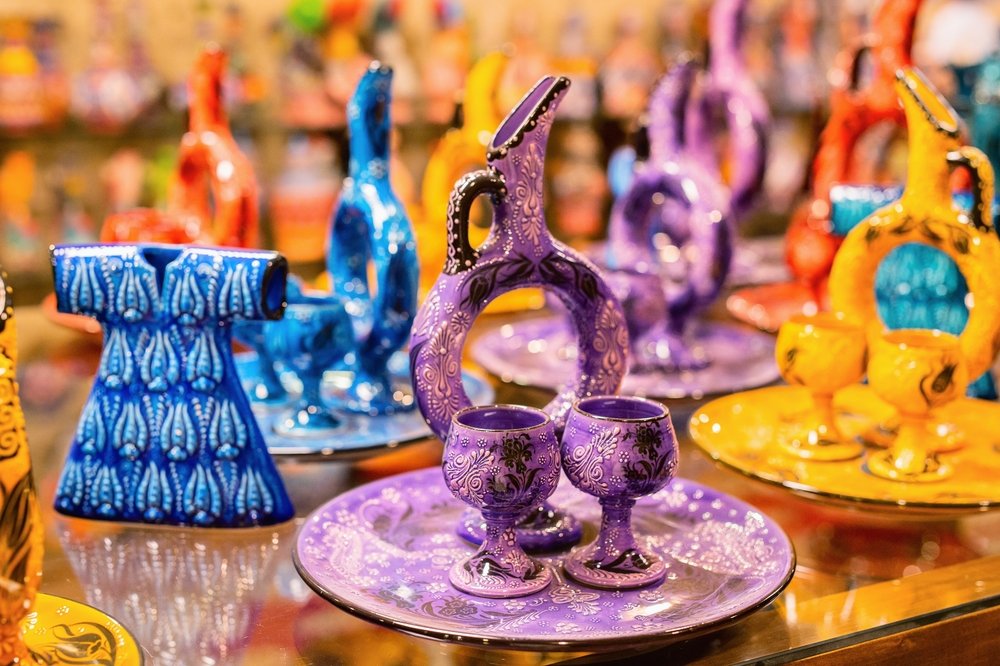
You may be wondering what to buy in Cappadocia and what kind of gift you should bring back as your trip comes to an end.
It's easy to learn about the area's culture history and beautiful scenery when you visit a great alternative vacation spot like Cappadocia. There are many things you can buy as gifts on tours of Cappadocia. Your journey through Cappadocia wouldn't be complete without some souvenir shopping. The region offers a wealth of unique items that make for perfect keepsakes or gifts for loved ones.
Cappadocian cuisine, with its delectable flavors and communal dining culture, offers a sensory adventure that will leave a lasting impression. And when it comes to shopping, Cappadocia's carpets, pottery, wines, spices, and sweets serve as souvenirs that encapsulate the spirit of the region.
Whether you're a history enthusiast, an art lover, a foodie, or simply a curious traveler, Cappadocia welcomes you with open arms. Its culture is an invitation to immerse yourself in a world where ancient traditions coexist with modern life, creating a harmonious blend that's as captivating as the landscape itself.
A Quick Guide on What and Where to Look:
- Göreme and Avanos: The Finest Ceramics
- Avanos: Handcrafted and Sculpted Ceramics
- Nevşehir Merkez: Vibrant Hand-woven Carpets and Rugs
- Göreme: Turkish Mosaic Lamps
- Uçhisar Castle: Evil Eye (Nazar Boncuğu)
- Uçhisar and Urgup: Cappadocian Wine
- Nevşehir: seeds, spices, and dry fruits
- Ürgüp: Sweet Turkish Delight
Things to Do in Cappadocia

As you delve into the mystical world of Cappadocia, prepare for an adventure that combines history, culture, and the wonders of nature. From soaring above the breathtaking landscapes in a hot air balloon to exploring hidden valleys and hiking ancient trails, Cappadocia offers a wealth of experiences that will leave you captivated and inspired.
With its unique blend of spirituality, folklore, and outdoor adventures, Cappadocia invites you to uncover its secrets and create memories that will last a lifetime. Whether you seek a spiritual journey, an adrenaline rush, or simply a deeper understanding of this remarkable region, Cappadocia has something extraordinary to offer every traveler.
- Adventure and Outdoor Activities
- Hot Air Ballooning in Cappadocia
- Hiking and Trekking Adventures
- Rock Climbing and Outdoor Sports
- Museums and Cultural Centers
- Pottery Studios
- Carpets and Textiles
Books and Literature
- "A History of Cappadocia" by Michael Gough: Delve into the historical narrative of Cappadocia through this comprehensive book.
- "Birds Without Wings" by Louis de Bernieres: While not specifically about Cappadocia, this novel explores the multicultural mosaic of Anatolia, providing cultural context.
